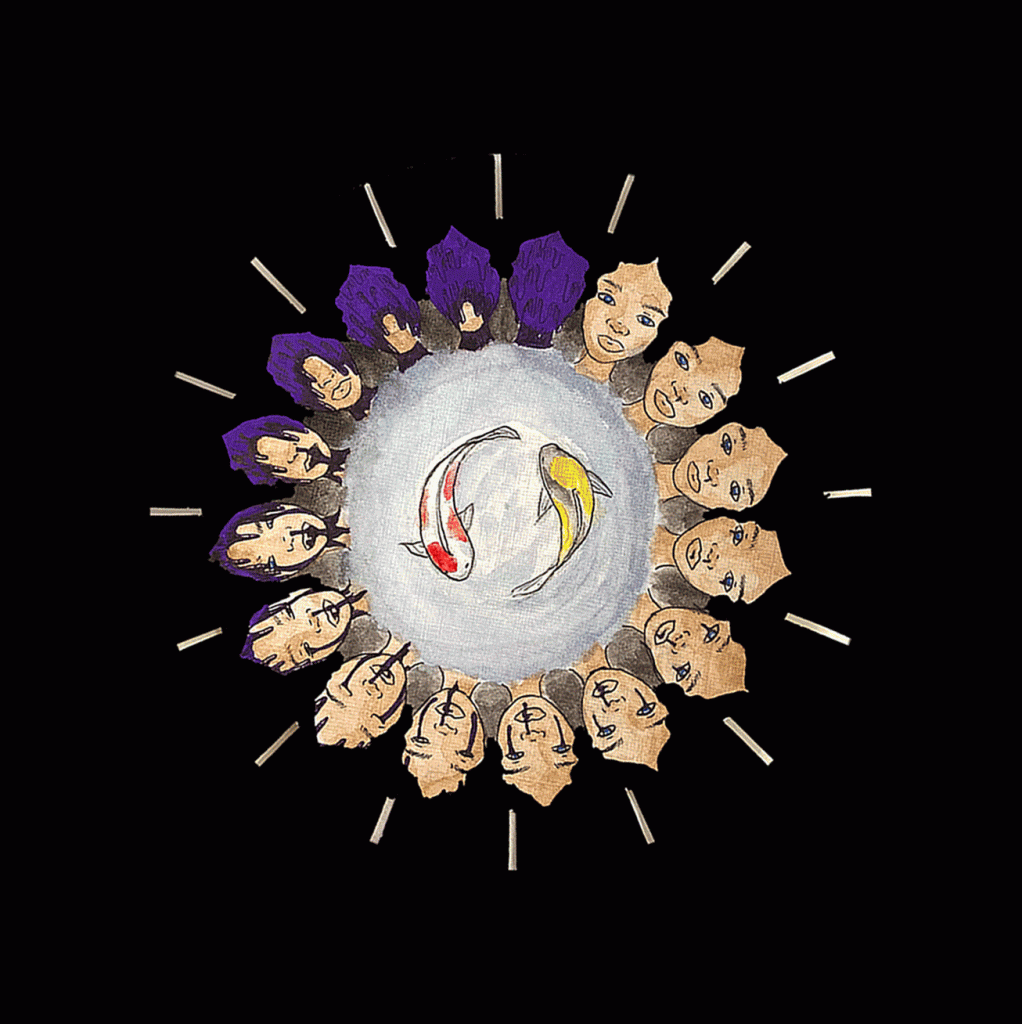ɪɴᴛʀᴏᴅᴜᴄᴛɪᴏɴ
For the Conceptual Project, we were tasked with developing our abstract thinking and communication skills to figure out how to use unconventional forms to express ourselves. It focused on creative risk-taking through poetry, music, art, animations, experimental film and web production, and challenged us to express our views through our unique aesthetic. We improved our technical communication skills by learning a variety of modern professional equipment and applications. This project allowed me to be creative when creating poetry, taking pictures, and animating, and I was able to learn and experience a lot of new forms of expression.
ᴘʜᴏᴛᴏ ʜᴀɪᴋᴜ
For our first project in English, we were instructed to write a haiku based off a prompt assigned to us. My prompt was exploring the feelings of happiness through music. In Digital Media, we recorded audios of our haikus and put together a video using Premiere Pro. I really valued learning about and writing haikus during this unit, and also enjoyed getting more proficient at Premiere Pro.
𝗙ʀᴇᴇ ᴠᴇʀꜱᴇ ᴘᴏᴇᴍ
In English class, we studied the important elements that make up a quality poem and practiced writing them. This is the final product of our free verse poetry project, in which I constructed an ekphrastic poem. We then created a visual composition of our poem in Digital Media, as well as recording audios for our poem and intention statement. I valued and enjoyed producing different formats of my poem because it allowed me to explore and take into consideration how to present my poetry in different, more creative ways.
“Stranded in the Gray” is an ekphrastic poem in free verse in which I draw inspiration from Salvador Dali’s acclaimed painting “The Persistence of Memory”. This artwork is famous for its surrealism, and what I derived from examining this piece are emotions of weariness and fatigue from the misshapen clocks and the surrealist idea of a blurred line between dream and reality, all of which are included in my poem. I also established the setting of my poem off this painting, a desert, and developed the subject to be a representation of how the clocks are portrayed. The original lethargic emotions I first decided on using led me to incorporating a pessimistic theme where the subject is constantly cheating himself out of opportunities to grow and improve his well-being due to his lackluster and dreary outlook on life. His mentality leads him to refuse to step out of his comfort zone to improve his current state, hence when he sees “majestic, vivid hues” but chooses to continue seeing gray because it is “familiar” or comfortable. This draws a parallel to when people turn down opportunities that could positively impact them because of the belief that they will ‘fail anyways’ and let their negative mentality control their quality of life. They possibly justify their decisions by warping whatever opportunity they have the choice of taking into something unfavorable, like how the subject chooses to see the Dead Sea when really it is an oasis. The oasis would be a solution to him being “parched”, but he ignores it and will continue to complain about being tired and thirsty, victimizing himself, when there is a clear solution if he would only alter his worldview. I utilized a lot of visceral, visual, gustatory, and kinesthetic imagery as well as repetition, which is very prominent between the first and last stanzas. In regards to lineation, I used both enjambment and end-stops to either continue or create pauses in the flow. Some other techniques I used include similes (comparing sand to water and the subject to wax), symbolism (the “gray” and the oasis), and personification (his ankles “threaten” him). During my revisions, based on the feedback I received, I added a subject instead of directly describing the clocks from the painting which led me to rewrite the poem entirely. I aimed to include more metaphors and imagery in the revision and managed to lengthen it from 10 to 25 lines. An inspiration of mine was the poem “There Are Birds Here” by Jamaal May which helped me develop the direct yet somber tone of my poem as well as the lineation of it. Overall, I wanted to express the subjectivity of a situation depending on the person’s take on it as well as the damaging effects of pessimism and how blinding it can be.

ᴀɴɪᴍᴀᴛɪᴏɴ ᴡᴏʀᴋ
In Animation, we learned the principles and techniques and applied them to many different types of projects. Animation has allowed me to truly bring art to life and I’ve really valued learning how to animate both on paper and digitally.
ᴢᴏᴇᴛʀᴏᴘᴇ
The zoetrope was the first project we did. We had to divide our strips of paper into individual frames and create some sort of movement that could later be turned into an animation. Afterward, the frames go into the zoetrope which creates the animation by spinning the strips of paper really fast.

ᴘʜᴇɴᴀᴋɪꜱᴛᴏꜱᴄᴏᴘᴇ
We divided the Phenakistoscope wheel into 16 frames. We then turned it into a gif.


𝗙ʟɪᴘʙᴏᴏᴋ
The flipbook was 90 frames and we turned it into a stop motion.
